Leaderboard
Popular Content
Showing content with the highest reputation on 11/27/23 in all areas
-
Ka-52 AH (Russia) version 1.0.0 released! Changelog Version 1.0.0 Release version Swedish Infantry (Sweden) version 1.4.0 released! Changelog Version 1.4.0 Fixed Ak 5 clipping into back of Pskott 86 soldier Fixed Ak 5 rapid fire sound issue Fixed issue with embarking Fixed log errors introduced in DCS 2.9 US Infantry (USA) version 1.5.0 released! Changelog Version 1.5.0 Fixed FGM-148 direct attack issue Fixed M4 rapid fire sound issue Fixed embarking issue Fixed log errors introduced in DCS 2.9 Project 22160 Patrol Ship (Russia) version 1.2.0 released! Changelog Version 1.2.0 Added AI helicopter night landing feature Fixed helicopter pad deck height17 points
-
I see @mbucchia has pulled the pin on continued support for OpenXR Toolkit, Quad Views Foveated, Varjo Foveated and other associated VR apps due to work life balance concerns. Completely understandable, but thanks for all the work you've done Matt. Having eye tracking is a significant quality of life improvement for this little community.11 points
-
8 points
-
New episode of the "Mover and Gonky Show" will stream live tonight featuring Wags as a guest host.6 points
-
Also noticed. They looked great when they came out but with MT (or something else) there is this clear grid pattern, which also affects contrails and missile trails now. Lack of particles for a lack of a better term. Would be also neat to have proper fog, wind effects, and turbulence + icing within clouds under proper conditions.6 points
-
6 points
-
Preface: The main purpose of this post is not to strictly improve the missile performance itself, but to correct values in the AIM-7 missile Lua code that are not accurate to the publicly available information. Any improvement to the performance of the missile should be seen as a side effect and not the intended purpose. This post seeks to compare several public sources on the AIM-7's Hercules MK-58 rocket motor to what is actually modeled in game, and contrast them accordingly. Tests were done using a modified AIM-7F utilizing the "corrected" values to showcase the differences to the vanilla missile. Only the AIM-7F was used for testing as the kinematics between each variant carrying the MK-58 rocket motor are practically negligible. The Tacview files will be provided in this post. The ED AIM-7 vs Public Data: 1. Rocket Motor Burn Time According to ED's missile code (Fig. 1), the AIM-7 has a booster stage burn time of 3.7 seconds, and a sustainer burn time of 10.8 seconds for a total run time of 14.5 seconds not including the 0.2 second delay for the boost ignition and 0.2 second delay for the sustainer ignition. However, according to the "Raytheon AIM-7F Standard Missile Characteristics" data sheet (Fig.2), "AD-A-142508" (Fig.3) and "Gallery of USAF Weapons, 2010 Almanac" (Fig. 4) the stated burn time for the boost stage is 4.5 seconds and the sustainer stage is 11 seconds for a total run time of 15.5 seconds. This is one full second, not including ignition delays, of difference between the ED code and public information. This may be a negligible difference, but there is a conversation about edge cases where the one extra second may matter. Figure 1: Default Eagle Dynamics AIM-7 MK-58 motor code Figure 2: Raytheon AIM-7F Standard Missile Characteristics Engine Ratings Figure 3: AD-A-142508 AIM-7F data sheet Figure 4: Gallery of USAF Weapons, 2010 Almanac AIM-7 data sheet 2. Boost and Sustain Fuel Mass and Mass Ratios Looking at the ED code (Fig.5) boost stage for the MK-58 has a fuel mass of 38.48kg (84.83lbs), and the sustainer stage has 21.82kg (48.10lbs) of propellent for a total mass of 60.3kg (132.9lbs). The sustainer-to-booster propellent mass ratio is approximately 63/37. However, comparing this to the Raytheon propellent masses (Fig. 6) the boost phase contains 52.0lbs (23.6kgs) of propellent and the sustainer fuel mass is 83.0lbs (37.6kg) for a total of 135.0lbs (61.2kgs). The sustainer-to-booster propellent mass ratio with this information is approximately 39/61. The actual masses of propellent in each stage are practically the same with only an error of 7.5%(smaller mass) and 2.3%(larger mass), but reversed in ratio. According to a Canadian study of the Mk-58 Mod 5 rocket motor, there are no listed measurements for the individual propellent masses except for a total fuel mass of 61kg (134lbs). However, the stated sustainer-to-booster propellent mass ratio is 70/30 (Fig. 7) which leads to a booster fuel mass of roughly 18.3kg (40.3lbs), and a sustainer fuel mass of roughly 42.7kg (94.1lbs). Neglecting that the Mod 5 version of the motor may have slightly different masses for each stage, the point stands that the ED MK-58 is coded to have a complete reversal of the publicly available data on the propellent mass and mass ratios for each stage. This will lead to noticeable differences in the performance of each stage as we will see in the test portion of this post. Figure 5: ED AIM-7 fuel mass code Figure 6: Raytheon AIM-7 SMC Fuel data Figure 7: Canadian MK-58 study 3. Boost and Sustain Specific Impulse Values As stated in the ED AIM-7 code (Fig. 8.), the specific impulse for the boost phase of the MK-58 motor is 247 seconds, and 209 seconds for the sustainer phase. Using the ED values, and a gravity value of 9.8 m/s2, we get a boost phase thrust of approximately 25.174kN (5659lbf), and a sustainer phase thrust of approximately 4.138kN (930lbf). Now, according to both the Raytheon AIM-7 SMC (Fig. 2) and the AD-A-142508 (Fig. 3), the stated thrust of the boost phase is 5750lbf (25.577kN), and 1018lbf (4.528kN) for the sustainer. Note that the ED values are underperforming, but can be considered negligible as there is only an error of about 1.6% and 8.6% and motor performance varies with many factors. Using the ED values for both thrust and fuel mass, but correcting the fuel ratios and burn time for each stage, we get a boost phase specific impulse of 530 seconds and sustainer phase of 121 seconds. This is quite a dramatic difference in performance between the actual ED missile and this theoretical "corrected" motor with the boost phase being over twice as efficient, but the sustainer being nearly half as efficient. Now, this may seem as though the performance of the missile may also dramatically improve, but, as we will see in the tests, this is not the case. This is a minimum however as the ED missile uses a lower thrust and fuel mass compared to the public data, so there may be performance left on the table. If we use only public data to formulate the specific impulse of each stage then we get a boost phase of 498 seconds and a sustainer phase of 135 seconds. We will see how this version of the missile compares to the ED one as will. Figure 8: ED AIM-7 specific impulse code In-Game AIM-7F Tests: Test Parameters: Game Version: 2.9.1.48335 Map: Marianas Weather, Date, Time: Mission Editor defaults Launch Platform: F-15C Launch Altitude: ~40,000ft Launch Speed: ~1.5 IMN Target Platform: MiG-19P Target Altitude: ~40,000ft Target Speed: ~1.2 IMN Test 1: Control: Test 2: Corrected Burn Times: Test 3: Corrected Burn Time, ED Fuel Mass, Corrected Ratio: Test 4: Corrected Burn Time, ED Fuel Mass, Corrected Ratio, and Specific Impulse: Test 5: AIM-7F Public Data Only: Conclusions: First, comparing the control missile to the missile from Test 2, we see that the change in burn time yields practically zero difference in peak energy states. However, it can be said that the extra time in the boost phase and overall longer burn time will help in edge cases where a slightly longer burn time would result in better terminal energy. Looking at Test 3, we see that the acceleration observed at each stage is dramatically different where the majority of the acceleration of the missile is felt during the sustain phase rather than the boost phase, and the overall acceleration of the missile is much smoother reminiscent of the AIM-54's motor. Yet, again, the missile does not yield any noticeable improvement to peak energy state, but it can be said that this could perhaps drastically improve the performance of the AIM-7MH and P missiles as the loft maneuver is less than optimal which depletes the effectiveness of the MK-58's boost stage. This is just speculation though. Next, we see that in Test 4 we finally yield some peak energy improvements however small. It is worth noting that the energy graph has now returned to shape of the vanilla missile with the boost phase taking the brunt of the acceleration leg work. Although the gains are small, this would still result in a better missile with the extended burn time and slightly higher peak energy state, however marginal. Finally, we arrive at Test 5 using only public data. This missile yields the best peak energy state gaining as much energy over Test 4 as Test 4 gains over Test 1. Again, the energy graph is practically a replica of the vanilla one in terms of shape. Although the specific impulse of the boost phase is lower than that of Test 4 the sustainer is higher, and this results in the higher energy state as Test 5 would have higher actual thrust values compared to the ED numbers. It is important to note that Test 4 and 5, where the sustainer specific impulses are lower than the vanilla, would indicate that overall performance may be worse against a maneuvering target, but, again, this is just speculation since the test was done against a cooperative target. Overall, ED has done a fair job at replicating the AIM-7's MK-58 motor performance using "incorrect" fuel ratios and specific impulses, but it is unfortunate that it has been done with "incorrect" information. I believe that the closer we can get to real values (as long as they are public, of course) the better the simulation will be. References: 1. Raytheon AIM-7F Standard Missile Characteristics: http://aviationarchives.blogspot.com/2016/08/raytheon-aim-7f-standard-missile.html 2. Gallery of USAF Weapons, 2010 Almanac: https://www.airandspaceforces.com/PDF/MagazineArchive/Magazine Documents/2010/May 2010/0510weapons.pdf 3. AD-A-142508: https://apps.dtic.mil/sti/pdfs/ADA142508.pdf 4. Canadian MK-58 Mod 5 study: https://apps.dtic.mil/sti/pdfs/ADA596430.pdf AIM-7F Corrected Burntime.acmi AIM-7F Vanilla.acmi AIM-7F Public Data Only.acmi AIM-7F Corrected Burntime+Fuel Mass+Impulse.acmi AIM-7F Corrected Burntime+Fuel Mass.acmi5 points
-
5 points
-
5 points
-
4 points
-
Yep, it would be very nice to see it in action. But since I've spent many nights finishing the asset and don't have the energy or time to make a video. I hope it will find itself to the videos of content creators.4 points
-
4 points
-
Из всего этого потока сознания и коллажика (кстати, не надо сильно надувать щеки, бОльшая часть из этого у нас есть) понятно лишь одно - что наличие даже большого количества документов ни на шаг не приближает некоторых к какому-либо практическому результату и даже к простому инженерному пониманию предмета. Например, в вопросе о числе критически нагруженных подшипников в радиальном двигателе, который не сводится к простому пересчету на пальцах подшипников из перечня деталей.4 points
-
This issue was brought long time ago on this forum. This backfire script is present in spitfire p-51 and mosquito because all of them uses same code, could be in P-47 as well but i can't remember. Shutting via cutouts not by magnetos off is that engine burns out all remaining fuel from carbs it prevents fuel leaking in to inlet or outside of the plane. This is how this should work. 1 Run up engine to 1200-1500 rpm P-51 manual states it should be 1500rpm 2 Move cutoff lever or mixture lever to cutoff position 3. After lever is moved engine still runs because remaining fuel in fuel system is still distributed to inlet 4. After short period of time engine dies and prop quickly stops rotating if cut out is set in wrong way you may be not able to shut down engine or prop will come to stop after longer time, but if cut out allow to some fuel be distributed to engine it will not magickly stop firing and re-ignite at 100rpm, it will splutter through whole range of rpm. I had opportunity to visit Duxford air museum this year and in proces of exploring it, at least 3 or 4 spitfires started to take off, do fly by and some aerobatics like loops, so i ended up watching those Spitfires for at least 3-4 hours. I've seen couple start ups and shut downs as well as run ups. And i say that non of them act like DCS one. In DCS when you move this cut out lever engine shuts down immediately and when engine is about to stop it splatter again over and over you can see it on tachometer needle bouncing like a ball bouncing of the floor. My conclusion is that nether start up and shut down works correctly in DCS. Start ups are way to clean, throttle response with cold engine is way off, engine run immediately smooth as butter which for person who saw at least on start up knows that this is not true. Have you encounter any unsuccessful start up beside those in which you forget to turn on fuel or mags on ? And shut downs are off to, mainly because engines react instantly at cutoff lever movement and whole range from 1500 to 100 rpm doesn't splatter even once and when it is about to stop suddenly fuel is introduced to engine inlet sparking sporadic combustion. At 100rpm engine barely catch up when primer is used so why it should catch up when spark from magnetos are almost non existent due to that coil booster is off and some fumes of fuel magically ignites at 100rpm. This is ridiculous. This recording is the most interesting, we can hear idling spitfire up close and second spitfire is taking off, how i could hear that was exactly same way as on this recording, as soon far spitfire firewall throttle sound of the engine/prop overwhelmed everything else. If someone ask, yes spitfire sounds exactly like as on this recording from smartphone difference is only in how loud is that. Smartphone's software lowers microphone sensitivity when louder sound comes in, so idling and taking off spitfire loudness looks the same but it isn't, taking off spitfire is much much louder, this is why in DCS idling warbirds sounds so quiet.4 points
-
I have now added all the new airports, including: Biggin Hill, Manston, Detling, Lympne, Abbeville Drucat, Merville Calonne, Saint-Omer Longuenesse - Wizernes Here are the three zip files, which need to be copied to DCS install folder, DCS World OpenBeta\Mods\terrains\Normandy\vfstextures Make sure to back up your original files first. https://www.mediafire.com/file/isa4bl67pgbigf5/HardSplat.zip/file https://www.mediafire.com/file/j6gvpdse7q1be8k/HardSplat2.zip/file https://www.mediafire.com/file/dioryuzqrd3ygj4/HardSplat4.zip/file3 points
-
Так и у меня теперь не так. Компьютер то новый. Я тоже теперь могу всем рассказывать, что У МЕНЯ работает прекрасно, а у всех остальных - "вранье". Но вопрос то в другом. Ага, так изменилось, так изменилось... Глаза замозолил, разглядеть не могу. Так вот, насчет изменений: Имеем: на одном и том же железе и системе стоит симулятор из Вилларибо и симулятор из Виллабаджо. После каждого обновления первый работает все хуже и хуже, вплоть до полной невозможности игры. А второй работает все лучше и лучше еще и при лучшем качестве изображения. Внимание! Вопрос: команда разработчиков из какого города лучше решает задачу оптимизации игры при условии, что железо и система неизменны? НЕИЗМЕННЫ! И является ли оптимизацией игры изменения, после которых она способна хоть как-то работать только при тупом наращивании производительости железа. Это что - реально оптимизация?3 points
-
У меня тот же самый вопрос. На моем трехлетнем железе, на котором на момент покупки все работало неплохо без всяких МТ, при дальнейших обновлениях без фактического изменения картинки все было хуже и хуже. Потом, в самом начале перехода на MT производительность несколько "задышала", стало возможно играть. До следующих обновлений, а после 2.9 все фактически перестало работать вообще. Повторю - при той же картинке и тех же самых модулях. Даже совсем уже лоупольный по нынешним временам F-86 - вообще никак. Т.е. дело не в "тяжести" модуля, а в дикой деградации производительности движка без какого либо существенного изменения картинки. Самое "интересное" - все эти годы на том же железе MSFS стабильно работает без этих "качелей", а после последних обновлений так вообще стал существенно производительнее и плавнее. При том, что качество картинки там несравнимо выше. Это вот такая разница в прямизне рук разработчиков движка? Или чем еще это объяснить? Это не так. Выше я уже написал, как оно было. При чем здесь "согласен - не согласен"? Оно так есть. Это как в том анекдоте - "надо же себя заставлять".... Просто стечение обстоятельств - у вас оказалось другое железо, на котором СЕЙЧАС вы эту деградацию не замечаете. А я замечаю - еще раз повторю - купив компьютер, который хорошо тянул DCS. Через три года, при том, что в игре в части графики не изменилось НИЧЕГО, играть стало невозможно ВООБЩЕ. Ладно бы хоть можно было отключить "улучшения" и играть при "старой" картинке. Нет - хоть все выключи, до нуля - вообще НИКАК. Сейчас я тоже решил для себя вопрос, просто купив новый компьютер. В первую очередь - из-за DCS, т.к. MFSF без всяких плясок с бубном работал и работает прекрасно. И теперь, на железе этого года - я бы тоже не понимал - "чего они жалуются?", все же отлично. Вот только получается, что новый компьютер спсиху куплен, чтобы можно было хоть поиграть в то же самое и с той же графикой, что и три года назад. Просто, чтобы уже не выкидывать купленные модули и карты. Честно говоря, неприятно и непонятно. Тем более, когда есть другой пример с совершенно обратным результатом. И я вообще никак не могу благодарить разработчиков DCS за проделанные "улучшения". Потому, что есть другой реальный пример, как делается такая работа.3 points
-
You deserve a new donation on your Ko-fi ^^ Thank you very much for your absolutely fabulous work!3 points
-
Strange ... just got home and tested on my DCS latest openbeta .. the VPC objects show up just fine: make sure to have the Historic Filter disabled on the Mission Editor, as the VPC objects will not show up on the listings if the filter is enabled. I have the version I linked to a few posts above, mine does not need any bazar fix.3 points
-
3 points
-
You can achieve that in OMM by creating multiples Mod Channels, all pointing to the same Target directory, however this a "dangerous" setup since Channels work independently and will not check Mod overlaps for each other. If you take care that no Mod from one channel may overwrite one from another, this is fine. The terminology changed and will change again a bit in later versions (i am currently in major code refactoring)... This is really less complicated than it seem, the main problem is that contrary to most application, OMM does not confine user to a specific usage but let him combine elements and use them as he wish, more like in "sandbox" paradigm, that is mainly why many new users are lost at their first look. Mod Hub (or Modding Hub) is conceptually one "Sandbox", like a "project folder" where you will manager all mods and data related to a specific context, typically, a game. Within a Mod Hub, you can configure as many Mod Channel as you want. A Channel is typically linked to a Target directory, where mods are installed, for example, the game installation path. Typically, for DCS you may create two Mod Channels, the first for DCS Installation folder, the other for the "Saved Games" folder. Each Mod Channel is a specific "stream" so has its own dedicated Mod Library and Backup data directories, but you may however, customize both so theys points to the same custom folders (I think you now understand that you have very few limitations). That is for the basic setup.3 points
-
No FF Russian (modern-ish) aircraft. Boring to always fly Blue. Also I like the Su-25. But I would probably buy all the ones I want if there was a FF option...3 points
-
I have been away for a week or so from this forum because I lost a love one and been mourning. I came in to here to read around and then find this terrible lost of dburnes and adds to my sadness. The man has helped me in many ways here in this forum. I wish I caught this earlier to thank him for everything he had guided me through. Rest in Peace Don3 points
-
Like others have written. The modules come with the missions, not the maps. Unfortunately, it seems as we get more and more map, there are actually "less" missions. It might be that module developers prioritise the free maps, though Heatblur does an outstanding job in this regard, and I wish Razbam with their own map could have provided some more missions. I agree that ED could have made some missions for the free modules, especially to help sales of the maps that are included in the trials. They should definitely provide some Combined Arms ones too. I was kind of sure the MB-339 would have some since even the free version had some "Falkland" missions in the Caucasus as a stand in. I can't help but think that many modules could sell better if they all had some simple default missions. Many do have "cold and dark", "free flight" etc. I do believe these could be expanded into longer navigation/reconnaissance missions. We've all heard the common voice over with "you can follow the flight plan, enemies are stood down". Like for the F-5E in Sinaï, but what are the way points actually? And it would be fun if they were in various weather at different times of the day. We have received better eye candy for this the past few years, haven't we? [emoji6] Cheers! Sent from my SM-A536B using Tapatalk3 points
-
Part 1 on setting up the WW MIP. Please forgive the quality of narration https://youtu.be/cIxPDMXS2pk Part 2 https://youtu.be/wWxV3L0Cdp0 Part 3 https://youtu.be/kOxbPIa9Ilo Edit: My backlighting is set to an encoder on the Combat panel, not the V2 Takeoff panel. Also the screen ID's in Simappro are for the screens only, not the surrounding buttons. EDIT: ENSURE THAT YOU HAVE ALL YOUR SCREENS CONNECTED TO THE SAME HUB AND MAKE SURE THAT THEY ARE CONNECTED SIDE BY SIDE!!2 points
-
2 points
-
Completly new helicopter model opens possibility of mods of JA-37 Viggen, Tornado ADV, Mig-29M, Mig-29K, Mig-35 that have their unike models that are not yet in DCS.2 points
-
I have just executed the updater directly (it seems it does not automatically update the game with the MT exe) and installed the latest update. Works like a charm now! thanks!! Really enjoying this campaign2 points
-
2 points
-
Hey everyone. This year I started pushing hard on finishing up my flight training, squeezing in 28 flights over the last few months. I'm very near soloing and won't be too much longer to get final certification. I want to share some of the useful bits I've learned, and how my RL flight experiences have compared to simulation. I'll try to hit all the keypoints and obvious questions people might have, but feel free to ask anything you want elaboration on. My background Nerd from childhood, of course. I grew up playing F-117 Stealth Fighter, Thunderhawk, and got my first Thrustmaster joystick as a present to play Jane's US Navy Fighters. Stacks of info cards used to arrive in the mail, with eventually many large finders full of them. Lots of books, of course. Eventually as my access to money improved with adulthood so did the caliber of my simulation equipment. Today I have a 3/4 pit with top of the line gear and a VR headset, the only step up from here is a full motion rig. Simulator wise I'm not the best pilot, but I would say I'm well above average as far as being able to fight, fly formation, tank, land smoothly, etc. I had zero flight experience in rl until five years ago when I began an ill-timed attempt to begin lessons. The aircraft I am currently training on is an aerobatics rated, two seat Schleicher K-21 with a 55ft wingspan, pic provided below. My instructor's background My primary instructor is retired from USAF and airliners. He flew F-16s in Iraq, and has 750 hours in T-38s as an instructor. His total hour count is presumed to be ''many thousands''. He's a good guy, very rules oriented as military types tend to be. We don't talk much about his service history because of lack of time. He's stretched super thin so we're focused on task at hand, cause he's got other stuff to do when we're through. The other instructor I fly with is a very experienced civilian pilot who still flies a 172 nearly every day down to the airfield where he then usually either instructs or hops in one of our towplanes. Also a great guy with a huge amount of experience, a bit more hands off in his approach. I'm very fortunate to have such excellent instructors. Their experience and wisdom is literally priceless. Gliders? Really? Yeah! I actually have become quite smitten with them, as the emphasis is purely on personal skill and judgment. In a lot of ways any idiot can fly with an engine, but you have to really be good to stay in the air without one. You also have to be really good to get DOWN with one, because you do not have the option of a waveoff or go around. You get it right the first time, every time, you cannot afford not to. It's also a very affordable way to fly, virtually anyone can afford to do it. While your hours do not transfer over to other ratings, you learn all the same things, so it's very useful for ''pre-training training''. The final exam is an all day ordeal, a 500 question written exam, oral pop quiz and then a lengthy flight with an FAA examiner. Topics covered include everything EXCEPT engine related items, so weather, airspace restrictions, aerodynamics, best practices, etc etc. What challenges are unique to gliders? As indicated above, you don't have an engine (usually, a few models do), so most ''challenges'' revolve around that. Keeping track of where you are, how high you are, and whether or not you can return to the airfield safely are critical cause past a certain point you're definitely coming down and it's definitely going to be right around here, so making sure ''here'' is a good place to come down is important. This can be really important on a windy day where strong winds can cause you to drift farther than you intend, forcing you to put down in a field. If it happens, it happens and there's procedures to get you home, but if you routinely land out unnecessarily you'll be viewed as an idiot and nobody will come help you Another important, related aspect is the landing phase. Things happen very quickly and if you let yourself get too low there is no way to recover. You can also lose control of the situation due to weather conditions like severe sink. I have seen planes forced to land the wrong way up the runway due to being physically unable to reach the far end, and myself had to turn in midfield due to extremely severe sink preventing a proper pattern (we were doing doing the glider equivalent of touch and gos). Another critical phase is the initial tow. This is generally a pretty placid experience, but things CAN go wrong and they tend to be serious if they do (no engine, remember?) If a tow line breaks or the hook fails you can find yourself having to make critical decisions with very little time to do it. Do you have enough altitude to perform a pattern? Turn around and land on the runway the wrong way? Are you high enough to clear the trees and buildings at the end of the runway and make it to the field on the other side? This is extremely rare though, if proper maintenance is being performed. More likely is either the towplane or glider losing track of one another, potentially resulting in them going opposite directions to each other while still connected. Maintaining sight at all times is essential. Also possible is a failed release. Confirming the rope has properly come loose is very important before beginning any maneuvering, as again, you can end up going opposite directions while still connected. In one instance two pilots decided to ''race'' to the ground and a failed release resulted in the two aircraft hitting opposite ends of the towline at high speed, ripping both planes apart and killing all involved. Another potentially dangerous time is when a number of gliders separated by only a few feet vertically are all climbing in the same thermal (potentially a lot of them). It is important they are all spiraling in the same direction, at similar speeds, and nobody make any unexpected moves because the guys further up the column can't see the guys below and visibility to the rear and sides can be obscured by the wings, etc. Did simulator experience help with the transition to real flying? Yeah, quite a lot, particularly with overall familiarity with concepts. I went into it knowing approximately ''what to do'', knowing what the instruments are and how to read them, basic concepts of aerodynamics. Basically I started with a very well rounded ''knowledge base'' to build on. We also use a very nice pit onsite for training when the weather is bad (Condor 2 based) That said, I cannot emphasise enough two key differences between my sim experience and RL. #1 There are huge swathes of stuff that just don't really get done in-Sim. Radio usage is minimal and never to ''official'' form. Coordinated flight is very impractical for any aircraft lacking a modern HUD because you have to be heads down looking at an instrument, personally never bothered. Don't have to bother with airspace regulations. There's tons of other stuff of a more scientific or procedural nature regarding aerodynamics you may or may not have encountered or thought about that are suddenly required knowledge. So, I knew a lot about a lot of things, and zip about others. Terminology and being able to accurately describe things in a way it can be understood is another major shortcoming. #2 I cannot stress enough the importance of physical sensations. You can feel where the plane is and what it's doing in a way even a full motion rig can only dream of. Coordinated flight is trivial when you can feel whether or not you are doing it right. Landing is a whole different experience, even compared to VR the perspective feels very different, as well as physical sensations. The mental aspect of knowing you can potentially cause damage or death with a sufficiently bad mistake is also an aspect to consider. You don't get to casually botch landings anymore, especially in a glider, you either do it right the first time or it's apt to be serious. Can a person fly a real plane with ONLY simulator experience? Yes and no. Obviously simulators are a core part of the training pipeline for everyone from my glider club to the USAF. That said, there is a huge gap between ''basic familiarity with concepts and procedures'' and doing it for real. Probably why those pipelines inevitably end up focused on RL flying and dedicated trainer aircraft are still a key element of every program in existence despite the growing usage of VR. Could you handle just flying around, especially in ideal conditions? Sure. Could you handle a critical phase of flight like landing and takeoff? I would say a very cautious ''maybe'' with an experienced person available to talk you through it. On your own? Probably not. The potential for disaster would be extremely high. For example, just unfamiliarity with the physical controls could easily result in under or overcompensating at a critical moment. On that note, even the dampers I have installed do not feel like the real thing. In game I can do anything IN anything. In RL I was actually surprised how I felt not like I was starting from scratch all over again, but starting just above that. Key takeaway and useful tidbits from my training #1 Checklists. Use em. Seriously. 99% of the dumb stuff that occurs is a direct result of not having an established process or order of operations. For best results, have a simple checklist for each stage of your operation, and always follow it. If you get sidetracked or lost, start over. My instructor even has a printed checklist for his final pre-flight briefing regarding emergency procedures and inflight communication, even though he ''doesn't need it'' just because having it makes sure nothing ever gets forgotten. #2 Coordinated flight. Actually pretty important. The K-21 flies like a pig if you don't coordinate, wobbles around, sluggish to respond, etc. Fly it coordinated and it is very docile, smooth, and relatively responsive (for such a long winged aircraft). #3 When landing be farsighted. I mean that literally, don't look at the ground near your aircraft, look at the far end of the runway. Helps tremendously with perception of motion and overcontrolling. #4 Make many small corrections rapidly as needed rather than large overcorrections. If it's not enough add a little more, a little more, etc. Make these changes rapidly, but no large, sweeping movements, they introduce oscillations. #5 If you bounce on landing, do not try to force the nose down. You bounced because of too much velocity (vertical lateral or both), try to gently hold it off the ground until it stabilises and then land again. #6 Everything happens quickly, especially in a landing. Try to stay ahead of yourself mentally and be thinking about what you need to do BEFORE you need to do it. Ie ''land the aircraft'' mentally (going over the steps) before you enter the pattern. #7 Never miss an opportunity to make things easier for yourself. In my case it was somebody offering to straighten my aircraft before takeoff. I could've handled it, but why bother if you can take that issue out entirely? Do everything you can to insure you have the best chance of success. #8 My instructor's ''mantra for final'' Aimpoint, airspeed - You have selected an aimpoint, typically the end of the runway, and have an approach speed selected. Concentrate on maintaining both of those. Shift your aimpoint - You're beginning the flare just before touchdown as you are passing that initial aimpoint. At this point you're not really looking at speed or anything else anymore, you're 'flying for effect' ie manipulating the controls based on what you see and want to happen. Keep coming down - You're in ground effect and the aircraft is resisting descent. In a glider which is very light and has very long wings, ground effect is VERY strong, it wants to fly! It is critical to actually continue your descent or you'll balloon, if you balloon you'll end up stalling above the ground and then either have a very hard landing or start bouncing down the runway. Don't let it land - In the last foot or two hold it off the ground as long as possible so you land with the lowest possible speed. This is not only safest and easiest on the aircraft, but it's also easiest on you. These things I'm flying don't have a lot of suspension and jabbing your head into the canopy is definitely a thing. Alright, I've been writing this intermittently for several hours now and am getting rumdumb so I'm calling it quits. If I remember anything important I'll add it later, or if anybody has any questions I'll answer them. Again, I'm not some super experienced fighter pilot or anything, I'm just passing on my experience transitioning to real life and useful bits I've learned people might be interested in. See ya!2 points
-
Well, It kind of does matter who makes the missions because that's exactly who you should ask to do the job... not the map guys, as has been pointed above. Feel free to come back to this thread after a few months, but I can already predict things certainly won't have improved if you post here, and here only. So, it's you who are half-OT here. You don't go to dentist to ask for groceries do you? "Half-OT", because, granted, I can see how RAZBAM map guys could read this thread and poke their airplane guys to include a couple of Harrier missions, after all it's all within one company. For other semi-plausible aircraft missions for this region, however, you should make some noise in Aerges and IFE wishlist sections of the forum.2 points
-
We do have more damage model work to come in the future, but this example you are right the flight model should take account of the missing tail rotor. I will add this to our internal report.2 points
-
Very cool! I will download DCS again tonight, as usual after great mod released by CH2 points
-
ED has done something within the core files that prevents the gear of helo's from retracting , so CH has a workaround, this is more than likely the reason for the quick retraction(s)2 points
-
I would love to fly the Helldiver, don’t know what the last sim was where it was flyable2 points
-
Не согласен с данным заявлением. 2.9 у меня работает явно лучше, чем 2.8. И у моих односквадников тоже.2 points
-
Reading through all of this I do have to say: Incredible research work! Nice job Prez, I hope the team at ED will honor it in some way.2 points
-
2 points
-
All correct. The display/cycle waypoint limit is realistic, and you can manually choose another one, this will display it.2 points
-
Just for sake of realism i just shut fuel, engines are running much longer after shut off but they won't enter this splatter loop at low rpm where engine is about to stop. @Slippa I would love to but i live in Poland, reason why i've been in UK was different then visiting museum. Maybe some day it will happen If i would live in UK i would not miss a single air show unless 2 or more would happen at the same time2 points
-
OK I flew the mission again. Everybody took off and set course as briefed, RDV was made, then the squadrons assumed their escort positions. I could keep up with the AI, they stayed together more or less. Don't expect them to fly parade formation, nor should you. But the AI didn't do anything more stupid than it has been doing for the past 10 years.2 points
-
It is time to add a new link with all the fixes and additions to date. Including the @Urbi textures. All the skins I can find. Link will be placed in the first post of this thread.2 points
-
2 points
-
A realist is an optimist with experience! [emoji6] Sent from my SM-A536B using Tapatalk2 points
-
The Sea Harrier is also the second most successful jet fighter in history…. (if you use the very narrow definition of Kill : Loss stats It absolutely deserves its place in DCS2 points
-
Предлагаю немного изменить начальную заставку "15 years dcs". На заставке одни американцы. Кто делал? Добавьте хотя-бы Ка50, я не знаю, или что-то наше. Вы все таки начинали не с апачей).2 points
-
+1 Since we got the new cloud system almost 3 year ago there's basically been no updates at all?2 points
-
2 points
-
Recently Browsing 0 members
- No registered users viewing this page.



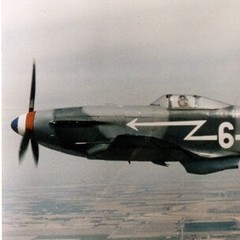

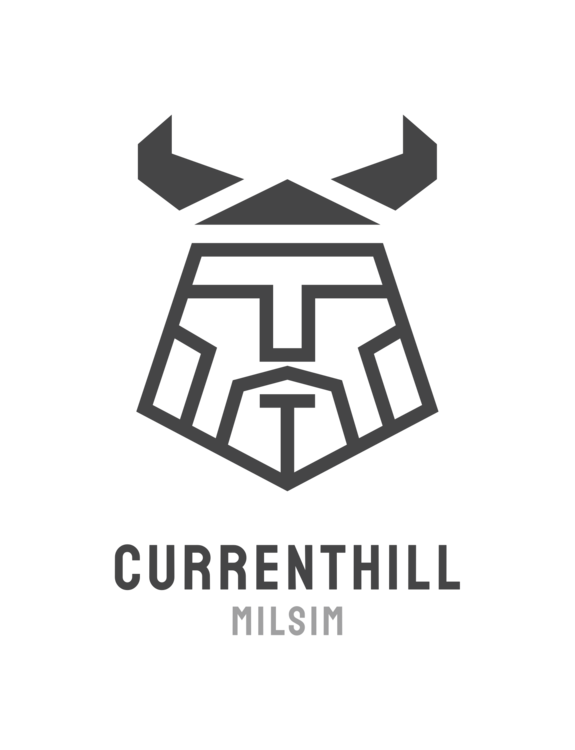
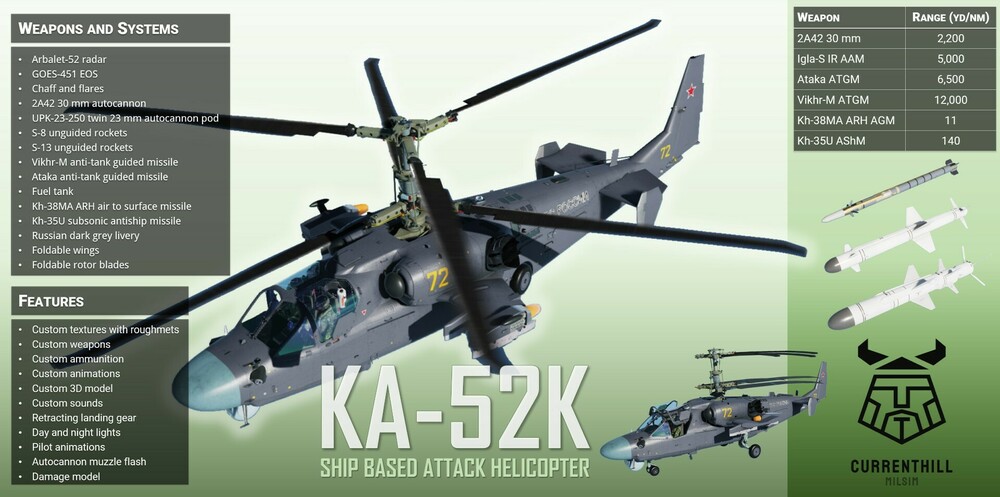
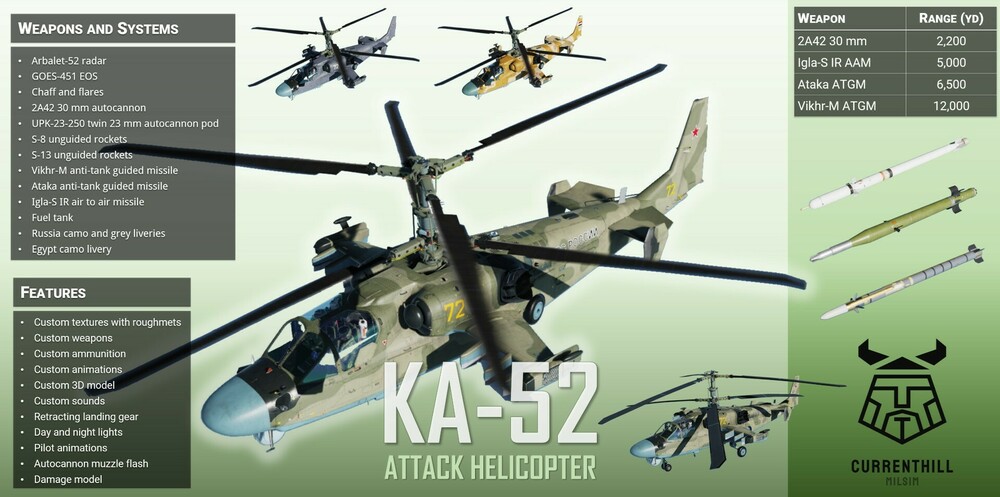

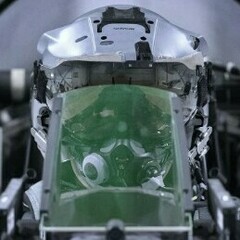
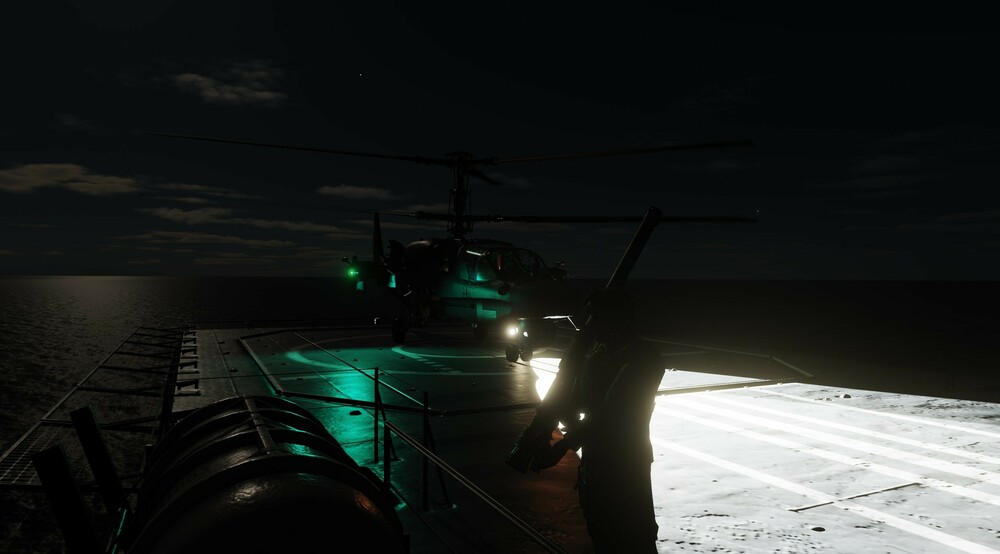
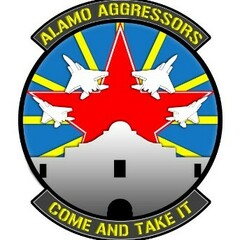




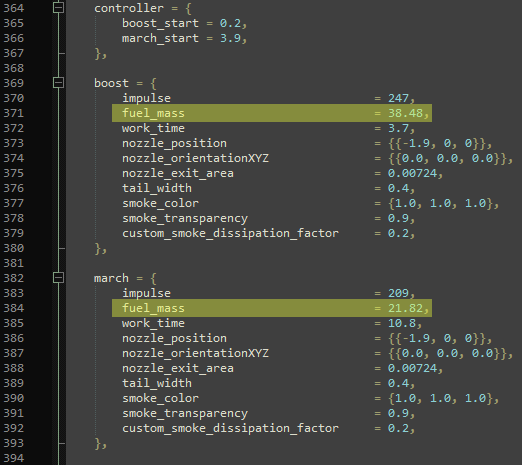






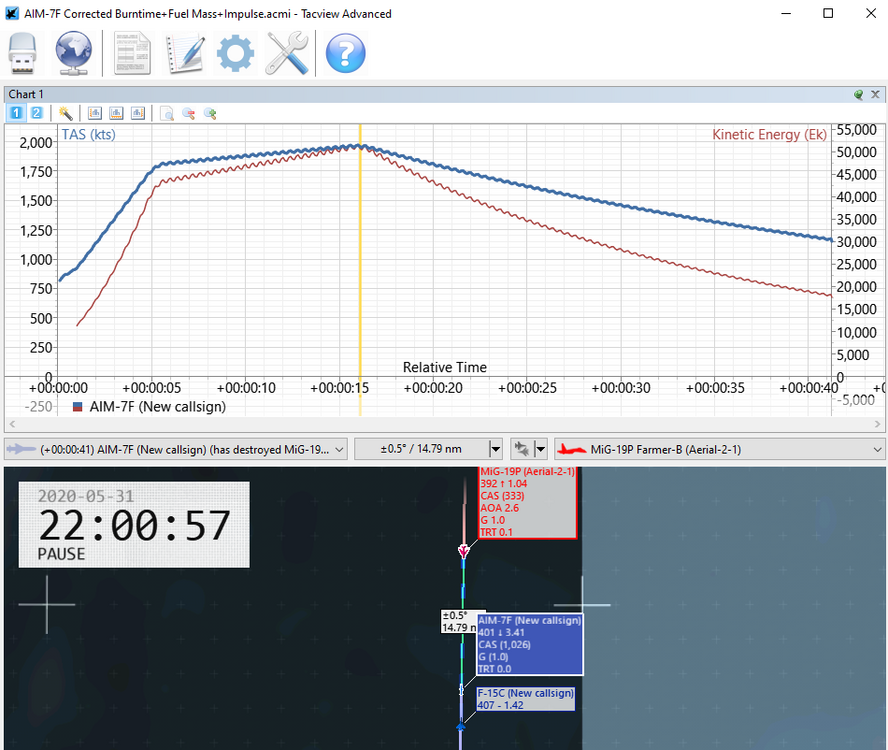
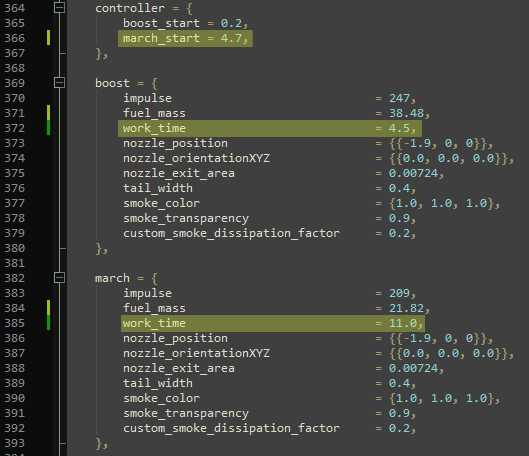

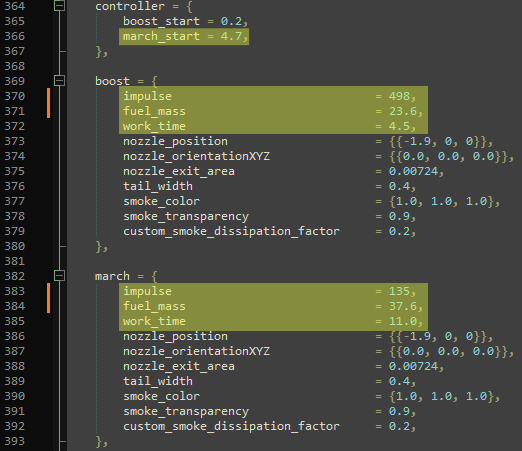


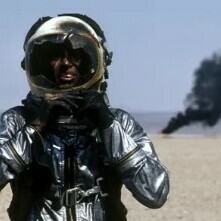

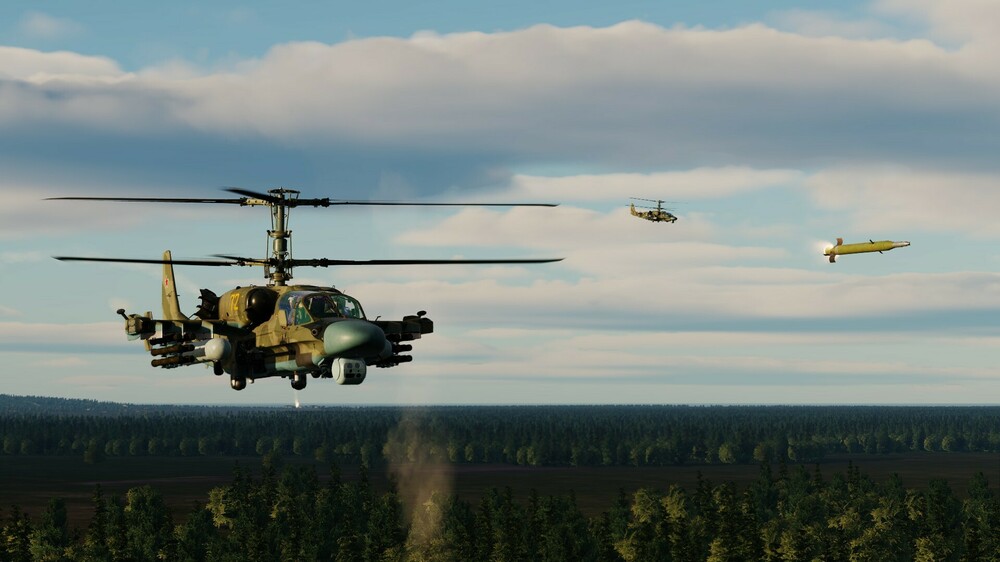
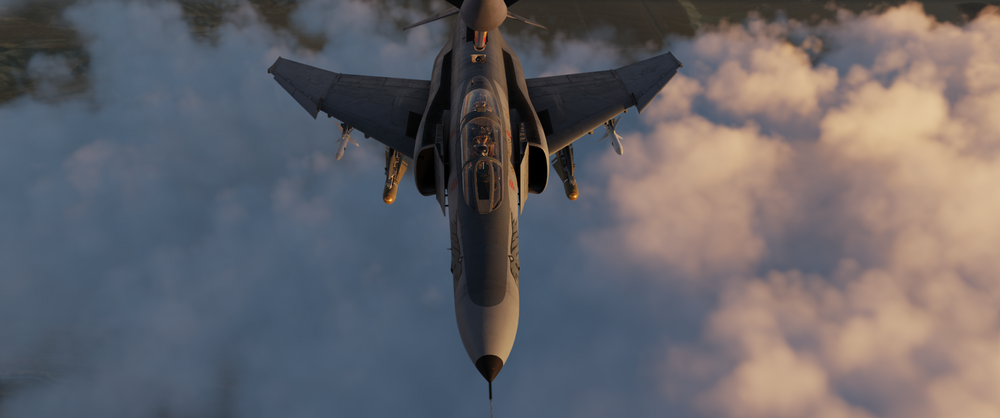
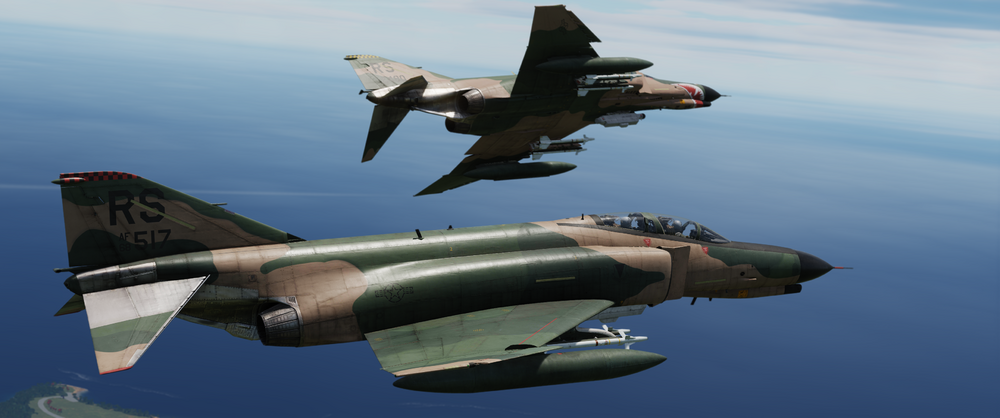
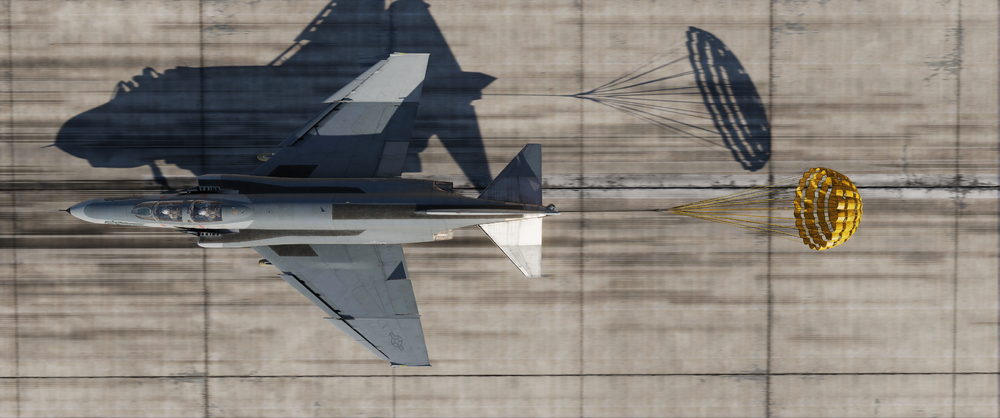
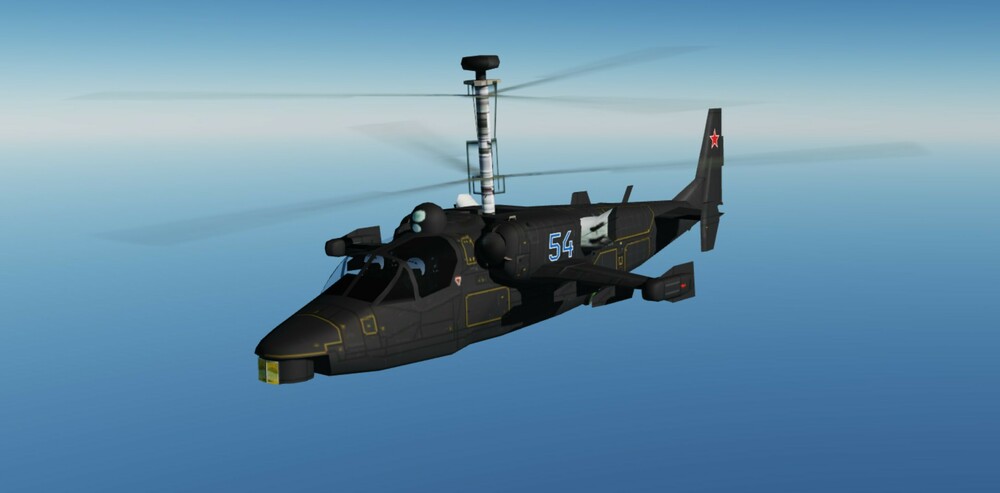
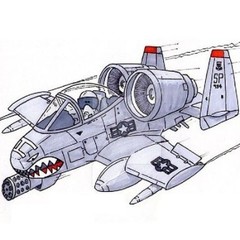

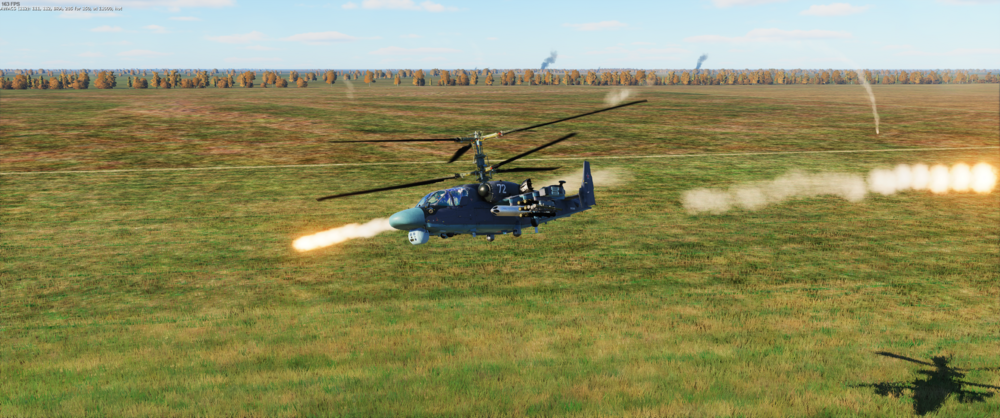
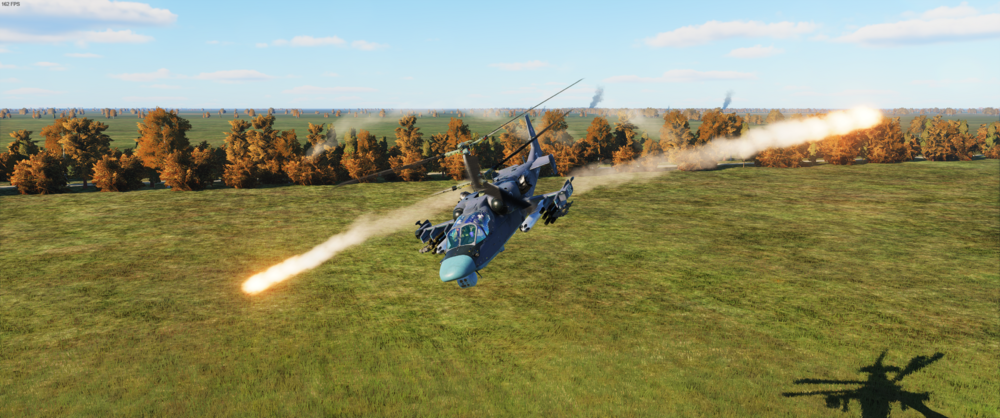

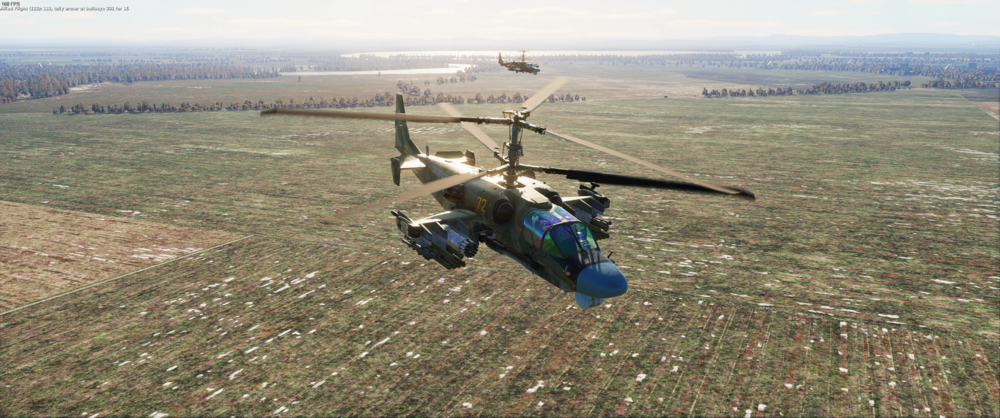



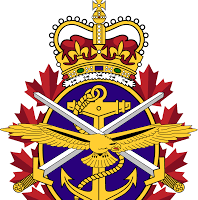

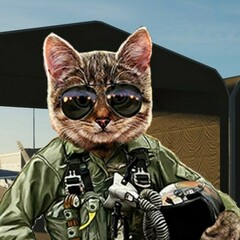
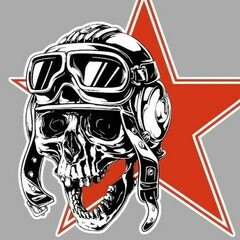
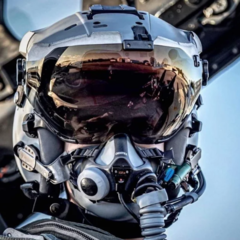

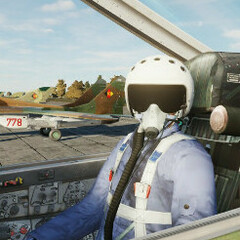

__59ff4e01-cafa-47bf-9fed-5ada637ec27a.thumb.jpg.41861e73b541e885e1e4f59301728944.jpg)